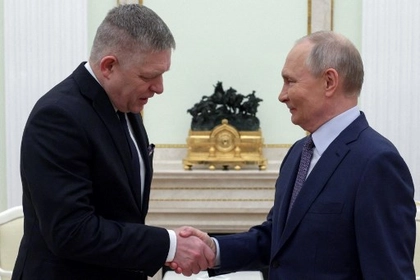The Kh-47/M2 Kinzhal (Dagger) is a nuclear-capable, aero ballistic missile (NATO designation Killjoy). It was designed by the Moscow Institute of Thermal Technology (MITT) in the early 2010s as a response to the development of advanced anti-missile defense systems by Western countries. It is generally believed to be a modified version of the ground-based Iskander-M short-range ballistic missile (SRBM) that was also produced at the MITT.
The missiles are manufactured by the Kolomna Machine-Building Design Bureau (KBM), part of the Rostec Corporation, located around 50 kilometers southeast of the Russian capital.
JOIN US ON TELEGRAM
Follow our coverage of the war on the @Kyivpost_official.
It was one of six “next generation” weapons first publicly revealed by Russian President Vladimir Putin during his annual address to the Federal Assembly on March 1, 2018. Putin claimed that the missile had been undergoing successful tests since December 2017.
He declared the missile as being hypersonic – the accepted definition of which means one that flies more than five times the speed of sound. In reality, it is not a true hypersonic missile as it only reaches hypersonic speed during the final part of its trajectory and can’t maneuver at such speeds while “cruising.”
It is launched from modified MiG-31K fighter-interceptors or Tu-22M3M and Tu-160 strategic bombers, and possibly the SU-57 “stealth” fighter.
The Kinzhal has a reported range of more than 2,000 km while carrying a nuclear or conventional payload of 480 kilograms. A July 2018 TASS news report suggested the missile’s range would exceed 3,000 km if launched from on the Tupolev Tu-22-M3 strategic bomber. The missile is 8 meters long, and a diameter of 1 meter. Its launch weight is approximately 4,300 kilograms.

‘We Need to End That Horrible, Horrible War’ – Ukraine at War Update for Dec. 23
Following the launch, the Kinzhal rapidly accelerates to Mach 4 (4,900 km/h), and may reach speeds of up to Mach 10 (12,350 km/hr). This speed, in combination with the missile’s erratic flight trajectory and high maneuverability, could complicate interception.
The Kinzhal is equipped with advanced guidance and navigation systems and is believed to use a combination of an Inertial Navigation System (INS), which provides continuous guidance based on the missile’s acceleration, velocity, and position combined with a GLONASS GPS systems with an optical terminal homing attack sensor.
The total number of Kinzhals, each of which cost around $10 million, that have been produced and held by Russia is a closely held secret. It was estimated prior to Russia’s full-scale invasion a Ukrainian intelligence report suggested that only around 50 units were held. It is not clear how many the KBM plant is capable of producing and it is known that the missiles are highly reliant on electronics that have been hampered by sanctions (although not entirely prevented, according to the Russian news outlet Insider).
During the initial stages of Russia’s full-scale invasion, Moscow claimed successful use of Kinzhals against Ukrainian targets on three occasions – in July 2022, December 2022, and in February 2023. The military magazine Global Security suggested that at least 21 had been expended by March 10, 2023.
The appearance of the American Patriot using Pac-3 missiles proved Putin’s invincibility claim was over-optimistic when a Kinzhal was shot down over Kyiv on May 4; then four more on May 16 following delivery of anti-aircraft missile systems to Ukraine.
Although Kinzhals are not as effective as Putin promised, they continue to pose a threat as Ukraine has a limited number of Patriot systems to combat them. On Aug. 11, Ukraine only managed to take out one of four Kinzhals, the rest hitting close to the Kolomyia airfield in the Ivano-Frankivsk region.
In a June report, the Yermak-McFaul Group identified that the Kinzhals, as with many other Russian-made missiles, rely on foreign, mainly US components for their production of the rocket. In the middle of October, Putin announced that the Kinzhal-equipped Mig-31K would be deployed to patrol the Black Sea.
Today, Jan.2, Russia fired another 10 Kinzhals at Ukraine’s capital, all of which appear to have been successfully intercepted. The reasons for this may be down to the increased number of air defense assets Ukraine now holds, or the experience gained in tackling the missiles.
You can also highlight the text and press Ctrl + Enter







